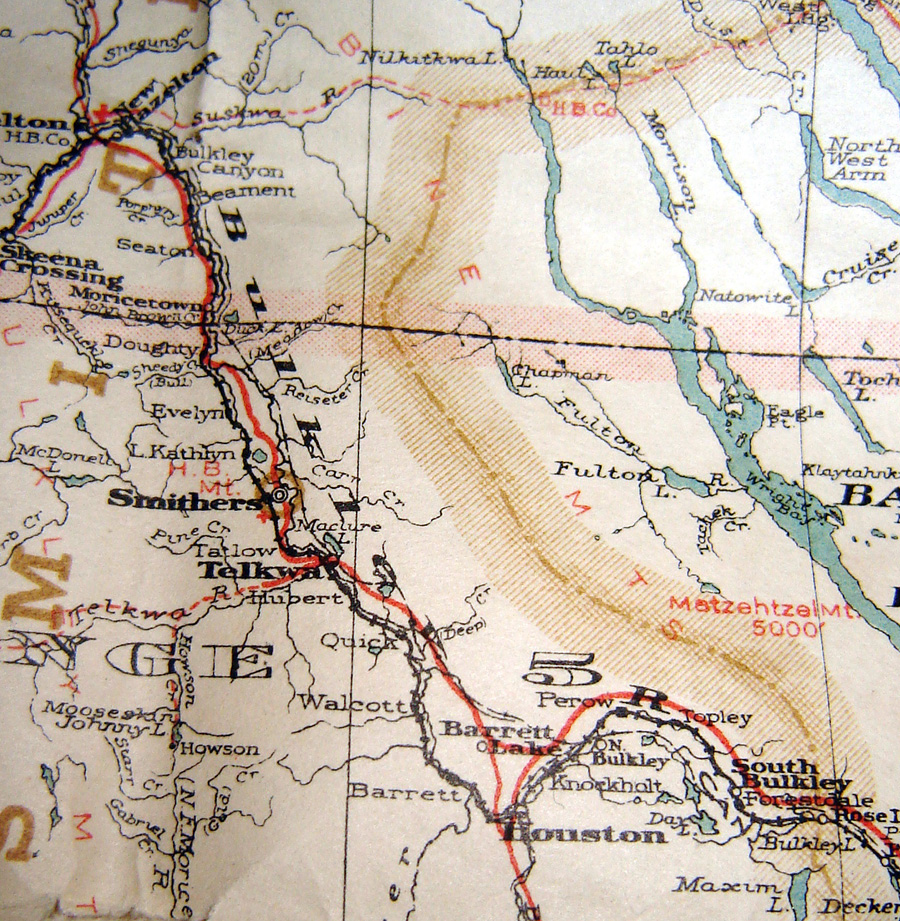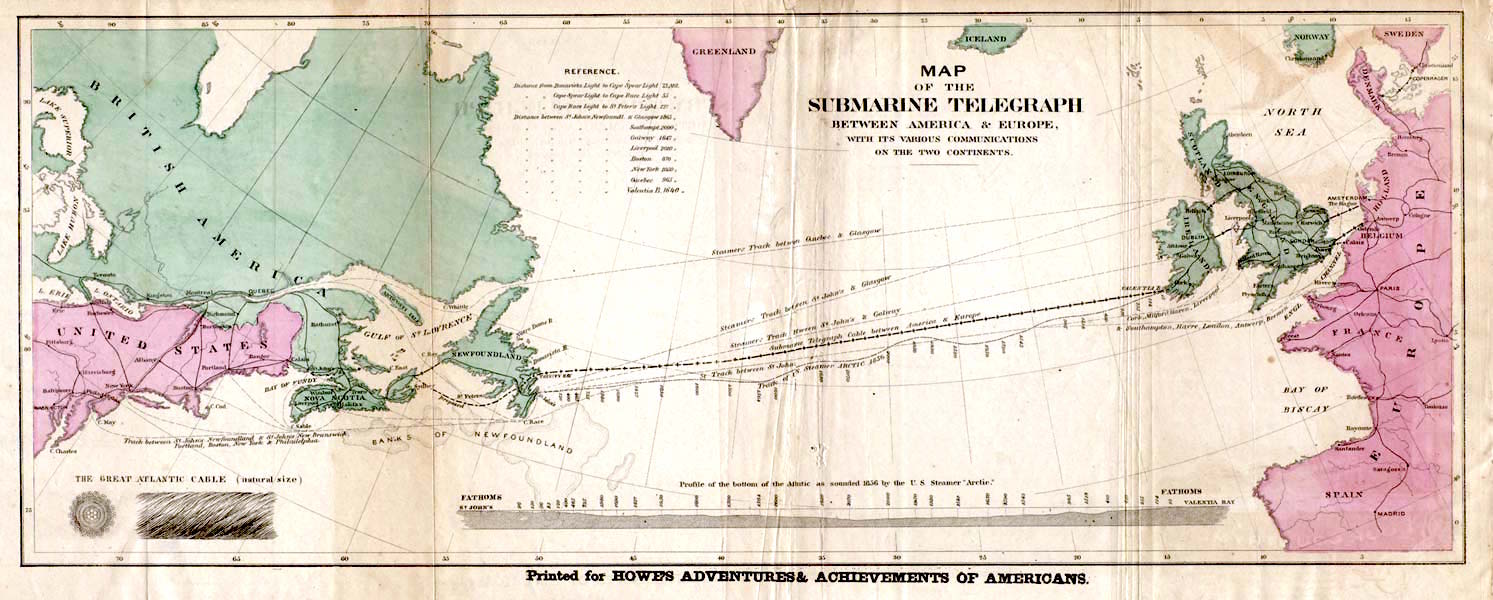|
Bulkley Valley
The Bulkley Valley is in the northwest Central Interior of British Columbia, Canada. Geography The Bulkley, a stream running through Houston, British Columbia, joins the larger Morice River about to the west. At the confluence, they become not the Morice, but unusually, take the name of the smaller Bulkley. The Bulkley River flows northwestward through the valley that is bounded on the west by the Hudson Bay Mountain range and on the east by the Babine Mountains. The northern boundary of the valley is usually considered the Bulkey's confluence with the Skeena River at Hazelton, although it is sometimes placed further south near Witset. The valley's southern edge is at Bulkley Lake, part way between Houston and Burns Lake. History First Nations The Wet'suwet'en people called the valley home for thousands of years. In the Delgamuukw decision of 1997, the Supreme Court of Canada affirmed that the Wet'suwet'en and neighbouring Gitxsan had Aboriginal title in the area. Surveys ... [...More Info...] [...Related Items...] OR: [Wikipedia] [Google] [Baidu] |
Hudson's Bay Company
The Hudson's Bay Company (HBC; french: Compagnie de la Baie d'Hudson) is a Canadian retail business group. A fur trading business for much of its existence, HBC now owns and operates retail stores in Canada. The company's namesake business division is Hudson's Bay, commonly referred to as The Bay ( in French). After incorporation by English royal charter in 1670, the company functioned as the ''de facto'' government in parts of North America for nearly 200 years until the HBC sold the land it owned (the entire Hudson Bay drainage basin, known as Rupert's Land) to Canada in 1869 as part of the Deed of Surrender, authorized by the Rupert's Land Act 1868. At its peak, the company controlled the fur trade throughout much of the English- and later British-controlled North America. By the mid-19th century, the company evolved into a mercantile business selling a wide variety of products from furs to fine homeware in a small number of sales shops (as opposed to trading posts) ... [...More Info...] [...Related Items...] OR: [Wikipedia] [Google] [Baidu] |
Second Boer War
The Second Boer War ( af, Tweede Vryheidsoorlog, , 11 October 189931 May 1902), also known as the Boer War, the Anglo–Boer War, or the South African War, was a conflict fought between the British Empire and the two Boer Republics (the South African Republic and the Orange Free State) over the Empire's influence in Southern Africa from 1899 to 1902. Following the discovery of gold deposits in the Boer republics, there was a large influx of "foreigners", mostly British from the Cape Colony. They were not permitted to have a vote, and were regarded as "unwelcome visitors", invaders, and they protested to the British authorities in the Cape. Negotiations failed and, in the opening stages of the war, the Boers launched successful attacks against British outposts before being pushed back by imperial reinforcements. Though the British swiftly occupied the Boer republics, numerous Boers refused to accept defeat and engaged in guerrilla warfare. Eventually, British scorche ... [...More Info...] [...Related Items...] OR: [Wikipedia] [Google] [Baidu] |
Preemption (land)
Preemption was a term used in the nineteenth century to refer to a settler's right to purchase public land at a federally set minimum price; it was a right of first refusal. Usually this was conferred to male heads of households who developed the property into a farm. If he was a citizen or was taking steps to become one and he and his family developed the land (buildings, fields, fences) he had the right to then buy that land for the minimum price. Land was otherwise sold through auction, typically at a price too high for these settlers. Preemption is similar to squatter's rights and mining claims. Preemption was politically controversial, primarily among land speculators and their allies in government. In the early history of the United States, and even to some degree during the colonial era, settlers were moving into the "virgin wilderness" and building homes and farms without regard to land title. The improvements increased the value of all the nearby property. Eventually ... [...More Info...] [...Related Items...] OR: [Wikipedia] [Google] [Baidu] |
Paddle Steamer
A paddle steamer is a steamship or steamboat powered by a steam engine that drives paddle wheels to propel the craft through the water. In antiquity, paddle wheelers followed the development of poles, oars and sails, where the first uses were wheelers driven by animals or humans. In the early 19th century, paddle wheels were the predominant way of propulsion for steam-powered boats. In the late 19th century, paddle propulsion was largely superseded by the screw propeller and other marine propulsion systems that have a higher efficiency, especially in rough or open water. Paddle wheels continue to be used by small, pedal-powered paddle boats and by some ships that operate tourist voyages. The latter are often powered by diesel engines. Paddle wheels The paddle wheel is a large steel framework wheel. The outer edge of the wheel is fitted with numerous, regularly spaced paddle blades (called floats or buckets). The bottom quarter or so of the wheel travels under water. An ... [...More Info...] [...Related Items...] OR: [Wikipedia] [Google] [Baidu] |
Atlin, British Columbia
Atlin ( Tlingit: ''Wéinaa'') is a community in northwestern British Columbia, Canada, located on the eastern shore of Atlin Lake. In addition to continued gold-mining activity, Atlin is a tourist destination for fishing, hiking and Heliskiing. As of 2016, there are 477 permanent residents. The name comes from Áa Tlein, the Tlingit language word for "big body of water". The surrounding area has been used by Inland Tlingit people for many years and the community is home to the Taku River Tlingit First Nation. Every July, the town hosts the Atlin Arts & Music Festival in Tarahne Park. However, the festival did not take place in 2010 nor in 2020. History The exact time when prospectors arrived in Atlin is unknown. George Miller is supposed to be the first person to have learned of the presence of gold within the area surrounding Atlin. The two men most commonly referred to as the "founders" of Atlin are Frederick Miller and Kenneth McLaren, who staked claims along the nearby Pi ... [...More Info...] [...Related Items...] OR: [Wikipedia] [Google] [Baidu] |
Driftwood Canyon Provincial Park
Driftwood Canyon Provincial Park is a provincial park in British Columbia, Canada. Driftwood Canyon Provincial Park covers 23 ha of the Bulkley River Valley, on the east side of Driftwood Creek, a tributary of the Bulkley River, 10 km northeast of the town of Smithers. The park is accessible from Driftwood Road from Provincial Highway 16. It was created in 1967 by the donation of the land by the late Gordon Harvey (1913–1976) to protect fossil beds on the east side of Driftwood Creek. The beds were discovered around the beginning of the 20th century. The park lands are part of the asserted traditional territory of the Wet'suwet'en First Nation.Ludvigsen, R. 2001. The fossils at Driftwood Canyon provincial park: A management plan for BC Parks. Denman Institute for Research on Trilobites, 339 Denman Road, Denman Island, BC V0R 1T0 http://www.bvcentre.ca/files/External/FossilMgmtPlan-Ludvigsen2001.pdf (accessed July 14, 2011) Access A car park just off the road access, lead ... [...More Info...] [...Related Items...] OR: [Wikipedia] [Google] [Baidu] |
Packhorse
A packhorse, pack horse, or sumpter refers to a horse, mule, donkey, or pony used to carry goods on its back, usually in sidebags or panniers. Typically packhorses are used to cross difficult terrain, where the absence of roads prevents the use of wheeled vehicles. Use of packhorses dates from the neolithic period to the present day. Today, westernized nations primarily use packhorses for recreational pursuits, but they are still an important part of everyday transportation of goods throughout much of the developing world and have some military uses in rugged regions. History Packhorses have been used since the earliest period of domestication of the horse. They were invaluable throughout antiquity, through the Horses in the Middle Ages, Middle Ages, and into modern times where roads are nonexistent or poorly maintained. Historic use in England Packhorses were heavily used to transport goods and minerals in England from medieval times until the construction of the first toll roa ... [...More Info...] [...Related Items...] OR: [Wikipedia] [Google] [Baidu] |
Quesnel, British Columbia
Quesnel (Kee-nel in French) is a city located in the Cariboo Regional District of British Columbia, Canada. Located nearly evenly between the cities of Prince George and Williams Lake, it is on the main route to northern British Columbia and the Yukon. Quesnel is located at the confluence of the Fraser River and Quesnel River. Quesnel's metropolitan area has a population of 23,146 making it the largest urban center between Prince George and Kamloops. Quesnel is a sister city to Shiraoi, Japan. Quesnel hosted the 2000 British Columbia Winter Games, a biennial provincial amateur sports competition. To the east of Quesnel is Wells, Barkerville, and Bowron Lake Provincial Park, a popular canoeing destination in the Cariboo Mountains. History Long before the arrival of prospectors during the Cariboo Gold Rush of 1862, the Southern Carrier (Dakelh) people lived off the land around Quesnel, occupying the area from the Bowron Lakes in the east to the upper Blackwater River and De ... [...More Info...] [...Related Items...] OR: [Wikipedia] [Google] [Baidu] |
Transatlantic Telegraph Cable
Transatlantic telegraph cables were undersea cables running under the Atlantic Ocean for telegraph communications. Telegraphy is now an obsolete form of communication, and the cables have long since been decommissioned, but telephone and data are still carried on other transatlantic telecommunications cables. The first cable was laid in the 1850s from Valentia Island off the west coast of Ireland to Bay of Bulls, Trinity Bay, Newfoundland. The first communications occurred on 16 August 1858, but the line speed was poor, and efforts to improve it caused the cable to fail after three weeks. The Atlantic Telegraph Company led by Cyrus West Field constructed the first transatlantic telegraph cable. The project began in 1854 and was completed in 1858. The cable functioned for only three weeks, but was the first such project to yield practical results. The first official telegram to pass between two continents was a letter of congratulations from Queen Victoria of the United ... [...More Info...] [...Related Items...] OR: [Wikipedia] [Google] [Baidu] |






